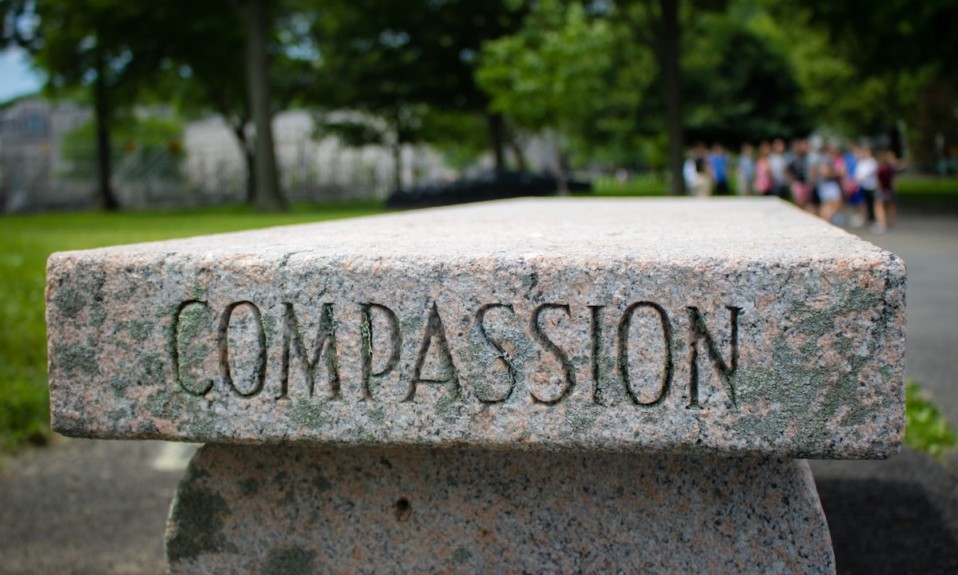As demonstrated by the plights of people with intellectual or developmental disabilities, the addiction treatment system is ill-equipped to help patients who don’t fit a particular template
By Veronica L. Holyfield
When we think of people with mental health issues and substance use disorder (SUD), we make a lot of presumptions as to who that person is. We may imagine the husband who has lost it all; we may picture the queer kid who has had a difficult life of rejection and abuse; we may imagine the single mom who has lost her children to the court system. Rarely, however, do we picture another group, already in the margins of our society and mostly forgotten: people with intellectual or developmental disabilities (IDD) who also struggle with addiction and mental health issues. While the field of behavioral health is rapidly growing to address the needs of marginalized and minority groups, accommodations for those with IDD are overlooked, and we have allowed a compromised community to remain in jeopardy.
A disability is categorized as an impairment of a person’s physical or mental condition that may limit the ability to perform certain activities or participate in normal daily life. According to the Centers for Disease Control and Prevention (CDC), 26% of adults in the U.S. are living with a disability, amounting to 61 million people who need some form of accommodation. Some 8% of the population falls within a range categorized as IDD. For this population, state statutes determine what a disability is—meaning it’s a legal definition, based on factors such as IQ and adaptive scores, rather than a clinical diagnosis.
Those of us who do have expertise in this work [with the IDD population] are few and far between, and what we can tell you is that when it comes to the issues of addiction and substance abuse, it’s just a black hole of services.”—Brian Tallant, Aurora Mental Health Intercept Center
In the U.S., most people are in the IQ range of 85 to 115, and the standard definition of intellectual disability is 70 or below. So where do those others—the high-functioning IDD but low-functioning average—fall? Between the cracks, says Brian Tallant, LPC, NADD-CC.
“I think the largest group of the community that deals with substance abuse are these people who have full-scale IQs between 70 and 80,” says Tallant. “They are larger than the entire group [with IQs] under 70, who have compromised executive brain functioning. And a lot of those people [between 70 and 80] have it as a result of trauma. It may not be so severe that they are considered to be developmentally disabled, but they’re certainly neurologically impaired, and they don’t qualify by statutory requirement for these supports.”
Tallant is a professional counselor and the program director of Aurora (Colo.) Mental Health’s Intercept Center, an outpatient and day treatment program for children who have a dual diagnosis of developmental disability and co-occurring mental health disorders. He says the primary resources for those with borderline intellectual functioning come from the mental health sector, but the lack of trained clinicians who can provide treatment methods for both IDD and SUD means that an indeterminate number of people in that group are self-medicating.
“There are a very small number of professionals across North America and in Europe who specialize in adapting mental health treatment for people that have developmental disabilities, even a smaller group of people that specifically work on substance use and substance abuse issues with that population,” Tallant says. “Those of us who do have expertise in this work are few and far between, and what we can tell you is that when it comes to the issues of addiction and substance abuse, it’s just a black hole of services.”
This hidden population is shuffled from service group to service group—too much to handle for mental health providers because of their substance abuse, and too much to handle in addiction circles because of their IDD. For this group, a swirling combination of complex trauma, compromised neurology and self-medication makes it nearly impossible for practitioners to differentiate between conditions such as high-functioning autism and persistent schizophrenia.
“You’ve got this big category of people who don’t really have what are considered to be a clear, diagnosable mental health issue,” Tallant says. “They certainly don’t meet [statutory] criteria for an IDD, [but] they’re not functioning well. One of the most accessible resources they have is alcohol and other substances.”

While there are SUD treatment programs available for neurodivergent and IDD folks, Tallant explains, the further someone falls down the scale of typical, the more incompatible the treatment is for the individual’s level of functioning. Indeed, while Tallant originally considered his specialized field of work as a clinical expertise, he now realizes that what he does is cultural competency.
IDD: A Disempowered Minority
Viewed through the lens of minority status, the population with IDD makes up a unique, disempowered minority—since it’s the only group in our community whose minority status is based on a medical diagnosis. Unlike any other minority group, Tallant says, that allows the healthcare system to discriminate against them. He considers that not just problematic, but a civil rights violation and human rights issue.
“There’s been a push over the last several years for cultural competency in community mental health,” Tallant says. “We have worked very hard, had very high standards and contractual accountability when it comes to minorities—things like the LGBTQ+ community, immigrant status, racial, ethnic and religious minorities. But when it comes to people with developmental disabilities, because their minority status is defined by a medical diagnosis, we allow our mental health system to say, ‘You do not have a covered diagnosis, and you cannot access services. You need to go to the [developmental disability] agency and get your treatment over there.’ [But] the developmental disability system does not have mental health professionals within it.”
Kelly Graff, the crisis management program lead with Developmental Pathways, a Colorado-based 501(c)(3) nonprofit serving folks with IDD, says that each individual in need has their own intrinsic complexities, which doesn’t fit the kind of treatment model preferred at the state level. Graff regularly hears from providers that a prospective client’s cognitive impairment makes them unable to actively participate in traditional treatment, and therefore the provider cannot serve that person.
“That’s a common theme both in mental health and substance abuse treatment,” Graff says. “[Providers] haven’t taken initiative or don’t have the tools to modify their treatment to serve someone that might have a disability related to communication or processing information. So a lot of times [the patient will] get minimal treatment or no treatment, because there is not a provider to serve them.”
Individuals with IDD encounter immediate barriers when they need a higher level of treatment, such as inpatient or acute care for stabilization. Many facilities can’t provide direct care for a physical disability or for a patient with a cognitive impairment who needs help with daily living skills; staff are typically not equipped to support that level of oversight. What ensues for people with co-occurrences of mental health issues, SUD and IDD is a revolving door of emergency room visits that provide medication stabilization but offer no life skills or adaptive, long-term resources. This leaves a large portion of the population underserved—or in many cases, not served at all.
In my experience, there truly is not a substance abuse provider that can treat someone with an intellectual and developmental disability. … Right now our system is set up where the primary diagnosis determines if you get care.”—Kelly Graff, Developmental Pathways
All of this is tied up with the issue of “diagnostic overshadowing,” the misattribution of what may be a range of physical and mental health symptoms solely to a person’s cognitive condition, allowing co-occurring mental health issues and SUD to go underdiagnosed or untreated. In the absence of a crossover diagnosis, referrals from a hospital for higher levels of SUD care for a patient with an IDD diagnosis are automatically denied through exclusionary criteria, because providers know they cannot serve that individual. By means of diagnostic overshadowing, providers are able, and even empowered, to deny critical, life-saving services to the disabled community.
“In my experience, there truly is not a substance abuse provider that can treat someone with an intellectual and developmental disability,” Graff says. “In theory, outpatient substance abuse treatment might be an option for them, but more often, because an individual cannot cognitively comprehend the information or participate to the level that the substance use provider needs to see, they don’t receive treatment. Right now our system is set up where the primary diagnosis determines if you get care.”
What to Do?
The lack of crossover education between the fields means caseworkers like Graff must use patience, compassion and creativity. The most common method of supporting someone with IDD and substance abuse, she says, is 24/7 supervision and preventing access to the substance. With a proper diagnosis of SUD, and using Medicaid waivers, the second-best option she has found comprises applied behavioral analysis (ABA) services that help the individual develop coping skills. But that is still a very different model from traditional SUD treatment.
For some folks, involuntary commitment is not out of the question, and people in Colorado, for instance, have been sent out of state to receive critical services and tap into the resources available elsewhere. But this presents a further issue: removing the autonomy of the individual and what Robert Perske in the 1970s called “the dignity of risk.” Perske, an author, theologian and disability rights activist, argued that integration for people with disabilities should apply not only to housing, recreation and employment, but also to risk itself. He fought against the overprotection of folks with disabilities, believing it denied people with physical and intellectual disabilities their freedom of choice.

“I’m very passionate about this,” says Tallant. “The truth is, I’m vicariously traumatized by it. I’ve got 25 years of being a steward to these families that are left in horrible situations where they’ve got violence hidden in their basement because they have no alternative, or their child is sent out of state and separated from them for months to years at a time because there’s no resources in the state of Colorado.”
The prevailing issue is a lack of providers in both sectors—the IDD field as well as the SUD field—who are willing to assume the alternative risk. Tallant recently heard from a payer source that because there are no providers to pay, there are no services needed. He vehemently disagrees. By creating proper reimbursement and funding streams to providers to offer comprehensive treatment for co-occurring disorders, the barriers for disabled folks will lift. Where the money is dictates where the providers channel their resources, and because diagnostic overshadowing creates a legal escape, the necessary compliances are not in place.
Tallant draws a parallel: “Let’s pretend for a minute that being LGBTQ+ was a diagnosis, and somebody came in for an intake and they say, ‘I’m gay, lesbian, transgender, and I need mental health care,’ and we said, ‘We don’t really have a specialization in that, but you know what—there’s an LGBTQ+ organization down the street, and you can go down there and get your mental health treatment.’ We would never [do that]; it would be an abomination. But we are allowed to do it with people with developmental disabilities because their minority status is due to a medical condition.”
While the Americans with Disabilities Act (ADA) prohibits discrimination against people with disabilities in such areas as employment, transportation, public accommodations, communications and access to spaces, those with co-occurring mental, behavioral and disability issues continue to face friction. In the end, the ones who suffer are the ones who are hurting the most.
Top photo: Dave Lowe; middle photo: Gage Walker; bottom photo: Zac Durant














